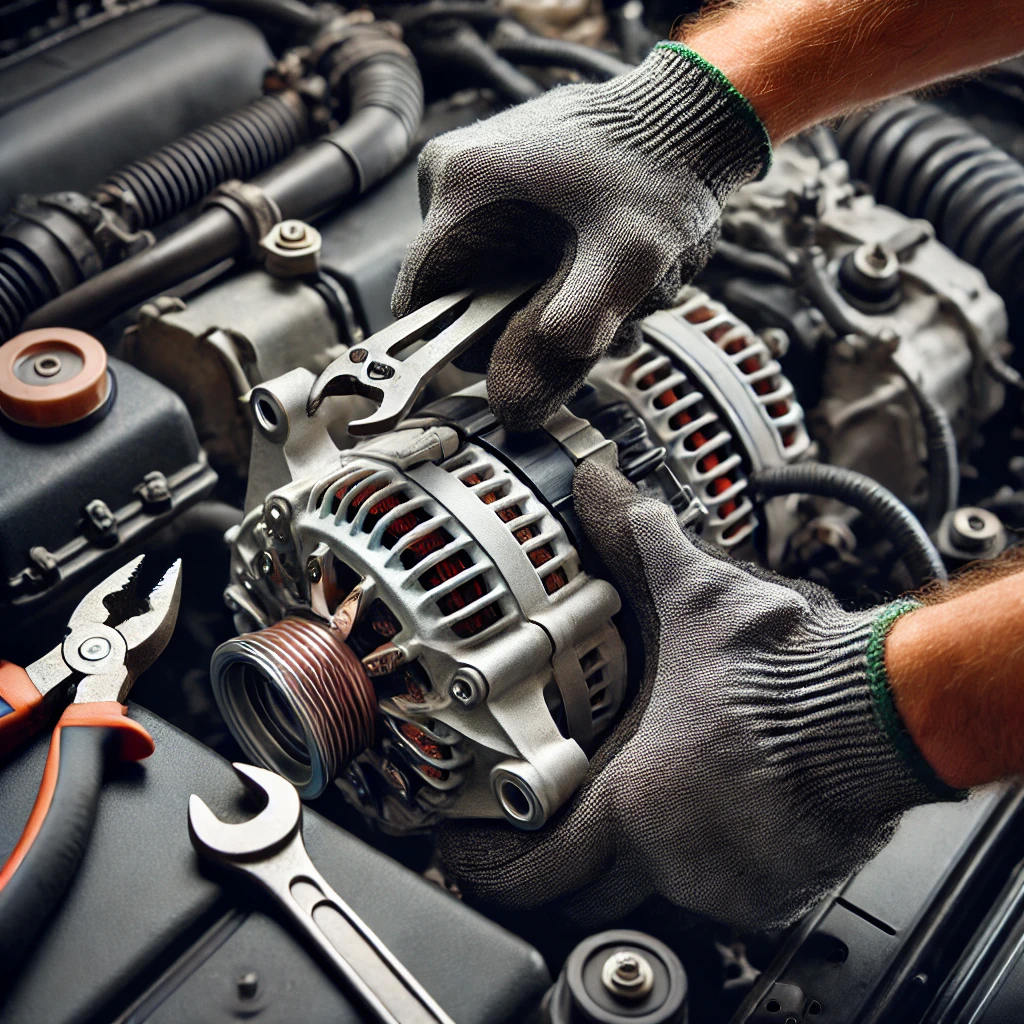A failing alternator is like a ticking time bomb under your hood—it might not explode, but it can leave you stranded at the worst possible moment. Fortunately, alternators rarely fail without warning. They drop hints, from subtle flickers to loud noises, giving you a chance to act before you’re stuck calling for a tow. In this article, we’ll explore the telltale signs of alternator trouble, explain why they happen, and guide you on what to do next. By catching these signals early, you can save time, money, and a whole lot of frustration.
1. Dimming or Flickering Lights
Your car’s lights are a window into the alternator’s soul. If your headlights or interior lights dim when you’re stopped but brighten as you accelerate, it’s a classic sign of alternator weakness. The alternator powers these lights directly when the engine’s running, and its output should stay steady. When it doesn’t, you’ll see the lights flicker or fade, especially under heavy electrical load—like when you turn on the heater or defrosters.
Why does this happen? A healthy alternator adjusts its output based on engine speed and demand, maintaining 13.5-14.5 volts. A failing one can’t keep up, especially at low RPMs, leading to those eerie dimming effects. Imagine driving at night and watching your headlights pulse like a heartbeat—it’s not just spooky; it’s a red flag.
2. Battery Warning Light
Your dashboard is your car’s way of talking to you, and the battery warning light (often a battery icon or “ALT”) is a direct SOS from the charging system. This light doesn’t always mean the battery itself is dying—it’s more likely the alternator isn’t charging it properly. Modern cars have onboard diagnostics that monitor voltage, and if it drops below a certain threshold, that light flicks on.
Don’t brush it off as a false alarm. John, a delivery driver, ignored his warning light for a week, thinking his battery just needed a charge. One rainy night, his van died mid-route, costing him hours and a missed deadline. A quick alternator check could have prevented the ordeal.
3. Strange Noises
Alternators aren’t silent workers. Inside, bearings and a rotor spin at high speeds, and when they wear out, you’ll hear it. A grinding noise might mean the bearings are shot, while a high-pitched whine could signal a slipping belt or internal friction. These sounds often come from the engine bay near the alternator’s location—typically front and center.
Picture this: you’re cruising along, and a faint squeal starts up, growing louder over days. That’s your alternator crying for help. Left unchecked, those worn parts can seize, snapping the belt or frying the unit entirely.
4. Electrical Malfunctions
Since the alternator feeds power to every electrical component, a failing one creates a ripple effect. You might notice:
- Power windows moving at a snail’s pace
- A radio that cuts in and out
- Dashboard gauges twitching or dying
- Interior lights dimming unexpectedly
These glitches happen because the alternator can’t supply enough juice. Think of it like a struggling power grid during a heatwave—everything slows down or shuts off. In a car, this might mean your heated seats barely warm up or your touchscreen freezes mid-navigation.
5. Dead Battery
A dead battery is often the scapegoat, but it’s not always the culprit. If your battery keeps dying despite being new or freshly charged, the alternator might not be doing its job. After starting the engine, the alternator should recharge the battery while powering the car. If it fails, the battery drains fast—sometimes in as little as 15 minutes.
Here’s a test: jump-start your car and drive it for a bit. If it dies again shortly after, the alternator’s likely kaput. Lisa, a college student, learned this the hard way when her car wouldn’t restart after a jump, leaving her late for an exam. A $20 multimeter could have pinpointed the issue days earlier.
6. Engine Stalling
In severe cases, a dying alternator can kill your engine. The ignition system—spark plugs, coils, and all—needs electricity to keep firing. If the alternator stops delivering, the battery picks up the slack until it’s drained, and then the engine quits. You might be driving along, only to feel the steering stiffen and the car coast to a stop.
This is rare but dangerous, especially on highways. One driver reported his truck stalling mid-commute, forcing him to the shoulder as warning lights blazed. The alternator had given up, taking the engine with it.
Why You Can’t Ignore These Signs
Overlooking alternator trouble invites bigger headaches. A dead battery is inconvenient, but a stalled engine in traffic is a safety hazard. Plus, a failing alternator can overwork other parts—like the battery or voltage regulator—leading to a domino effect of repairs. The National Highway Traffic Safety Administration notes that electrical failures, including alternator issues, contribute to thousands of roadside breakdowns annually. Catching it early keeps you off that statistic.
What to Do Next
Spot a sign? Here’s your game plan:
- Test It: Grab a multimeter and check the battery voltage with the engine running—13.5-14.5 volts is normal.
- Inspect the Belt: A loose or cracked serpentine belt can mimic alternator failure. Look for wear and ensure proper tension.
- Clean Connections: Corrosion on wiring or terminals can disrupt power flow. A wire brush and some elbow grease can fix it.
- See a Pro: If you’re stumped, a mechanic can run a full charging system test for $50-$100, often free with repair.
Conclusion
A failing alternator doesn’t hide—it flickers, whines, and stalls until you listen. By spotting these signs early—dim lights, warning signals, odd sounds—you can act before you’re stranded. Whether it’s a quick DIY test or a mechanic’s expertise, addressing alternator issues promptly keeps your car reliable and your wallet intact. Don’t wait for the final breakdown; those warning signals are your chance to stay ahead of the game.

